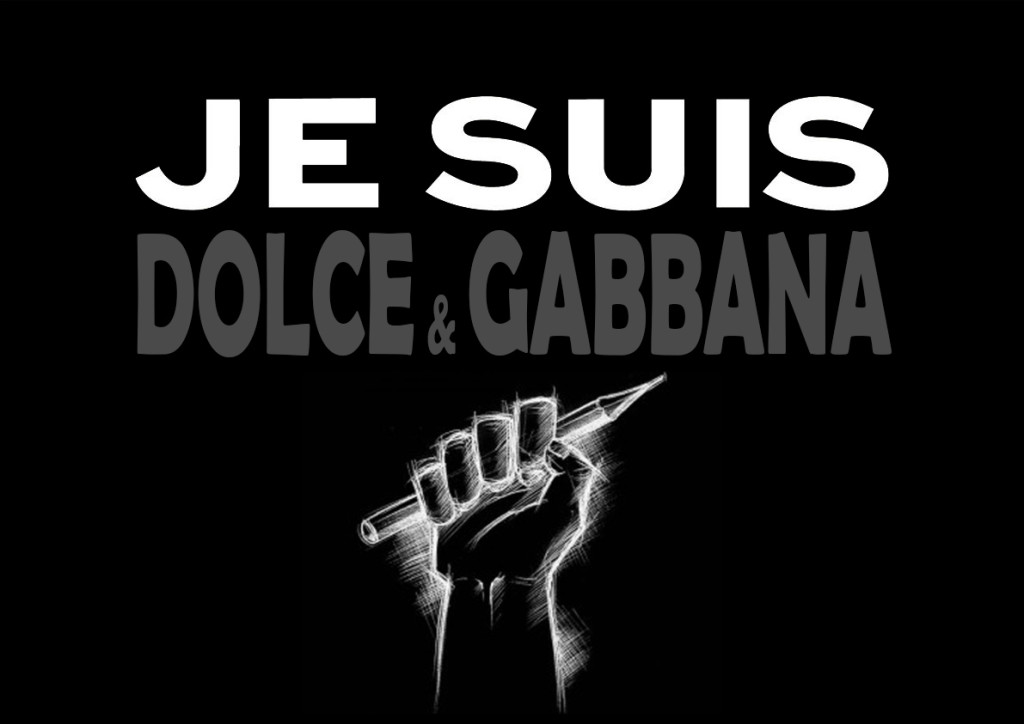Anyone who has worked for both a large corporation and a small, entrepreneurial company can talk endlessly about the differences in the two cultures and mindsets.
In this post, I look into these differences and the challenges they cause. It is a long post based on my latest book, Making Open Innovation Work. You can download it for free at this link : – )
The 7 key differences between big and small companies when it comes to innovation are:
• Speed of decision-making
• Attitude toward risk
• Allocation of resources
• Who understands the business model and who manages it:
• Processes or lack thereof
• Following rules versus breaking rules
• Differering definitions of innovation
Before I get into each of these differences, I would like to start out with a response I got to an earlier blog post on how the two types of organizations approach open innovation. The response was given by Russ Conser from Shell’sGameChanger program. Here’s what he said:
“Stefan, as is often the case, you’re on the right track—SMEs need big companies as much as big companies need SMEs. The trouble is that it’s a classic example of one being from Venus and the other from Mars. Precisely because they’re different and they need each other, they often come into conflict early in a relationship. Us big-company guys still have plenty to learn about how to work with SMEs without killing the very things that make them valuable (e.g. creativity, flexibility). Meanwhile, SMEs also need to learn to have realistic expectations of what they have and what they still need if they want to make their ideas real—much of which can often be found in the hands of the corporate types (e.g. financial resources, complementary skills, or practical context).
My experience is that most often there’s more than enough value at the intersection for both to be happy with the gains of a relationship, as long as they don’t kill each other in the process of creating it.”
Here’s another comment worth noting on culture from an anonymous poster in response to one of my blog posts: “Smaller firms tend to be younger and more entrepreneurial. The ‘can do’ spirit of innovation is often alive and well and a key part of their DNA (think Silicon Valley start-ups vs. Fortune 500s. As firms grow, this creative energy gets slowly squeezed out as the corporate focus turns to quarterly performance (vs. a longer-term view), stable operations (vs. disruptive innovations), and productivity improvements (vs. investing in growth).”
The differences that can cause problems when big and small companies come together for open innovation can be stark. Let’s look at a few that impact the way the two types of organizations approach open innovation:
• Speed of decision-making: Large corporations, with their abundance of silos and bureaucratic levels, often require considerable time to make decisions. Analysis paralysis is not uncommon, with decisions that seem simple to an outsider taking ages to make. In contrast, in smaller organizations, decision-making can be fairly rapid.
Thus, when these two types of organizations come together in open innovation, the smaller company may find the speed of progress frustratingly slow. At the same time, the people from the large corporation may be troubled by the constant pleas of the smaller partner to move faster. Both sides may be left feeling that the other side just doesn’t understand them.
Intuit, a California-based maker of financial software, is one corporation that has worked hard to overcome this problem. They understand that the reply time they can offer potential partners in their ecosystems is critical. As a result of this understanding, they try to provide a clear go/no-go within just forty-eight hours when they stage their Entrepreneur Days. This can take weeks or even months for many other companies.
• Attitude toward risk: How large and small companies feel about risk-taking can vary considerably. Particularly where the smaller company is a start-up or still in a fast-growth stage, the organization at all levels may wholly embrace risk because, at this point, the whole business is a risk. However, in a large corporation that has been around for decades, people may be far more vested in keeping things as they’ve always been than they are in trying something new and potentially risky. Here again, this difference can lead to frustration on both sides when two such organizations engage in an open innovation partnership.
Here’s another aspect of this difference as described by Bengt Järrehult, director of Innovation and Knowledge Management at SCA Hygiene Products and SCA Packaging, in a comment to my blog post on this topic: “The biggest difference as I see it is the balance between the defensive and offensive behavior. The bigger (and often the more mature) the company is, the more the company has to lose, and as ‘losses loom larger than gains’ (Tversky & Kahneman) the behavior of the larger, mature company gets more defensive and hence the relative focus on more potentially breakthrough innovations versus continuous improvements decreases.”
Obviously, if a large company and its smaller open innovation partner differ in terms of what type of innovation they should seek—breakthrough versus incremental—this can cause their partnership to fail. This is why clarity of purpose from the get-go is so important.
Edward Thompson, an advisor in the telecommunications industry, also weighed in on the topic of risk: “Big companies certainly can innovate. They have the required resources and deep talent pools. However, big companies are often very risk adverse, so it’s difficult to get a particular business unit or division to adopt an innovation that is not exactly in their market or technology sweet spot. True innovation often requires a company to embrace a totally new market space. Big companies are very reluctant to take any sort of risk associated with entering a new field.”
• Allocation of resources: In a small company, every penny counts. Resources, which can be scarce, are allocated based almost solely on whether they will boost the bottom line. This bottom line focus may not be so distinct in a larger corporation. With more abundant resources—at least in comparison to smaller companies—people in corporations may be relatively free spenders, although this is certainly not always the case and hasn’t been in recent years as the recession has taken its toll. However, the small company may expect its larger partner to foot every bill and may not understand that even big companies have their limits. The result of such a relationship can be similar to problems that arise when two people with very different attitudes toward money and spending get married.
• Who understands the business model and who manages it: Here’s an astute comment Michael Lachapelle, a Canadian expert on business design and business models, made in response to a blog I wrote about the differences between large and small companies when it comes to innovation:
“One of the considerations in driving innovation is who understands the business model of the company. In a small company it is much more likely that everyone in the company understands how the company works and how the individual parts will combine in the business model to create and deliver value to the customer/client.
Larger corporations tend to be much more fractured, and thus the staff is less likely to understand the whole. In this context innovation affecting the whole company can be a hard, long-term task, as one has to build a common understanding and mobilize around very different views of the company. Innovation is more likely to occur at business or product line level, then at a whole of company level.
A second consideration is who manages the business model. In big corporations, people feel responsible for only their portion, or sphere, of control. This control is manifested in being able to influence decisions or budgets, or being able to define meaning within the context of the business.
There are only a few people who “control” the whole organization, so innovation of the company has to be managed and driven by the senior executives. The more “distributed” control over the key areas of decisions, budgets, and meaning, the more difficult it is to drive innovation.”
Both of Michael’s points can lead to frustration for smaller companies when they try to engage with larger corporations in open innovation. Small companies may sense a lack of passion among corporate employees who don’t understand the whole business model, and the layering of control in corporations will often lead to slow decision making, as already mentioned.
• Processes or lack thereof: Many small companies don’t yet have defined processes in place to drive innovation forward. This is one of the areas where partnering with a larger company can really benefit them. Ironically, however, as someone pointed out in a comment on my blog, while “in theory, this dimension should go to the big guys who tend to take the time and effort to embed systematic processes,” this isn’t always the advantage that it might first at seem.
He continued, “I’m a big believer that innovation can benefit from process, tools, and governance and is not just a matter of divine inspiration—although that helps too! However, in practice, not many big firms have GOOD radical/blue ocean innovation processes. They tend to be good at incremental innovation (smaller-scale product improvements or extensions) because (1) this is their bread and butter and so they have dedicated resources focused on this, and (2) radical innovation is high risk and highly disruptive to a large organization from a resource, capital, and management focus perspective.”
• Following rules versus breaking rules: Mark Palmer, a communication advisor, added that “big companies preoccupy themselves with competitors, the market, and the rules. Small companies are more inclined to make up new rules.” This relates to some of the benefits of working with small companies as mentioned earlier. Of course, rules should be followed, but sometimes they do need to be bend—or perhaps even be broken—to make real progress.
Those large firms that are still strong innovators (Google, Apple, P&G, 3M, etc.) tend to be the exceptions that have continued to foster a great culture of innovation while also embedding strong processes that help nurture breakthrough ideas in the challenging confines of large, bureaucratic structures.
At an open innovation conference I attended, Cisco said it is trying to move from a culture of competition to a culture of shared goals, a move largely driven by a desire to innovate with external partners. Open innovation has the potential to change much-outdated corporate thinking beyond the “not-invented-here” culture.
As you work with external partners, you are exposed to other ways of getting things done. You bring diverse thinking into the organization. This can make you consider whether your current practices are good enough, or whether you have to adjust these or perhaps even develop new next practices for your organization. An example: you get new perspectives on collaboration. Perhaps this can inspire to better interaction and collaboration between business units.
That’s said, large companies have always used their size and power to get things their way. This is no different with open innovation. So I am not surprised when I listen to people from smaller companies complain about the behaviors of large companies when they start working together.
Such behaviors were confirmed by several large companies at an Open Innovation Summit I attended some time ago. There, executives from large corporations openly shared stories on how they had used their size and corporate power to get deals that favored themselves, and they even admitted that some deals could be so lopsided that they could discourage other smaller companies from working with them. Only half-joking, they also said that their view of win-win situations goes like this: “We win a lot. You win a little.” Or, “Win-win means that we get to kick the little guy twice.”
At least some larger companies are aware of this situation. I predict that as more large and small companies innovate together, larger companies will realize they can no longer afford to tarnish their reputation by behaving badly in such partnerships. They’ll begin to understand how important it is to be perceived as the preferred partner within their industry.
• Differing definitions of innovation: In response to a blog post I wrote about the differences between large and small companies, Jackie Hutter, CEO and IP strategist at Evgentech, a company with patent pending technology that greatly improves battery charging speed, made the following insightful comment based on her experience:
“One thing I have noticed with my own company is that there can be a real disconnect between the meaning of “innovation” between small and large companies. Some—perhaps most—large companies view innovation as a “super” product development team. These are the folks who look for breakthroughs, but these so-called “breakthroughs” are expected to slot into an existing product or project at the company. In contrast, at a start-up the “innovation” is their whole business, and developed wholly independently of the products and timelines of the large company.
We have already seen this when a Fortune 500 company selected us through an open innovation portal. The company was supposedly looking for innovations like our technology, but they effectively wanted it to fit into their existing infrastructure without much modification. They didn’t see that our technology could change the game for them because they were playing a different game than us. But even if they had seen that we were different, they wouldn’t have cared because they liked the game they were playing.
Fortunately, we were able to see that this company was not going to be a good partner, and we didn’t burn much time on them and moved on quickly. (They seemed a bit surprised when we effectively told them, “we’re not that into you.”) We learned much from this experience, and have modified our potential partner intake to specify “strong innovation mindset” because we recognize that unless a company is already wired to understand the opportunities that our technology will provide their company, they have a low likelihood of being successful in getting to market with our disruptive technology. And, if they aren’t successful, we won’t get paid.
Source: www.15inno.com


 Let’s talk competition. About three years ago, when I started researching the market for my new start-up citrusHR, there was nobody offering anything like it, at least for small businesses.
Let’s talk competition. About three years ago, when I started researching the market for my new start-up citrusHR, there was nobody offering anything like it, at least for small businesses.






